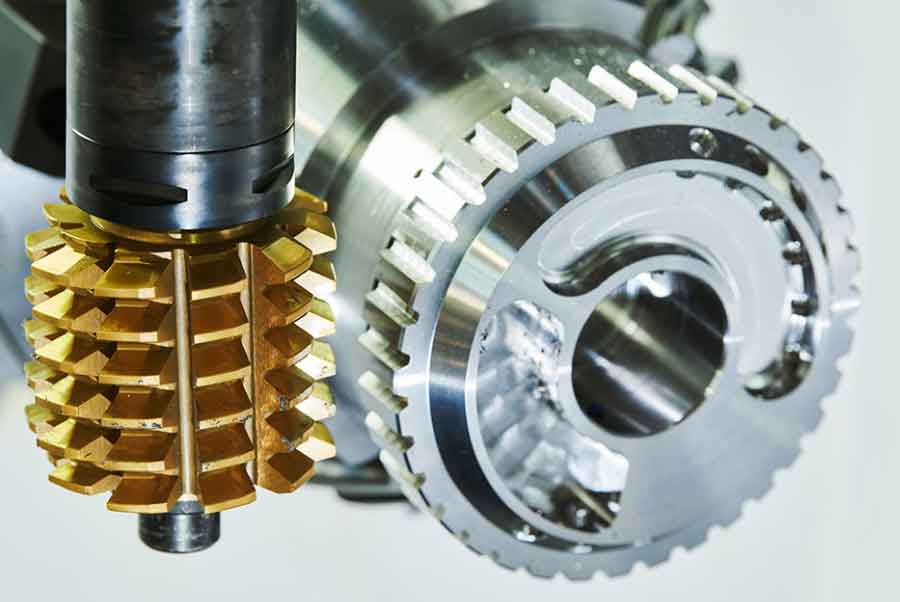Gear hobbing is a fundamental process in gear manufacturing that involves the production of gears using a specialized cutting tool called a hob. It is a widely used method for manufacturing various types of gears, including spur gears, helical gears, worm gears, and more. Here’s an overview of the gear hobbing process:

- Setup: The gear hobbing process begins with the setup of the hobbing machine. The machine consists of a hobbing tool, which is a cylindrical cutting tool with helical teeth, and a workpiece, which is the gear blank to be machined. The workpiece is securely mounted on a spindle, and the hob is positioned at a predetermined angle relative to the workpiece.
- Gear Blank Preparation: The gear blank, typically made of a suitable gear material such as steel or cast iron, is prepared by machining or forging to achieve the desired shape and size. It is important to ensure that the gear blank is accurately centered and aligned with the hobbing machine to ensure proper gear geometry.
- Cutting Process: Once the setup is complete, the cutting process begins. The hobbing machine rotates the gear blank while simultaneously feeding the hob into the gear blank. As the hob rotates and advances into the gear blank, it generates the tooth profile by removing material in the form of chips. The hob’s helical teeth progressively cut into the workpiece, forming the gear teeth.
- Feed Mechanism: The feed mechanism in the hobbing machine controls the axial movement of the hob relative to the gear blank. It determines the depth of cut and the rate at which the teeth are formed. The feed mechanism ensures a smooth and continuous cutting action, resulting in uniform gear tooth profiles.
- Cutting Parameters: Various cutting parameters are set to achieve the desired gear characteristics. These parameters include hob speed, workpiece rotation speed, feed rate, and axial depth of cut. They are determined based on factors such as the gear module, tooth profile requirements, material properties, and production volume.
- Cooling and Lubrication: During the gear hobbing process, it is essential to provide adequate cooling and lubrication to ensure efficient cutting and tool life. Coolants and lubricants are used to dissipate heat, reduce friction, and flush away chips from the cutting area. This helps to maintain dimensional accuracy, surface finish, and prolong the life of the cutting tool.
- Finishing Operations: After the gear hobbing process, the gears may undergo additional finishing operations such as deburring, chamfering, and heat treatment to enhance their surface finish, remove any burrs or sharp edges, and improve their mechanical properties.
Gear hobbing offers several advantages in gear manufacturing:
- Versatility: Gear hobbing is a versatile process that can produce a wide range of gear types and sizes, making it suitable for various applications and industries.
- Efficiency: Gear hobbing is a highly efficient method as it allows for the simultaneous cutting of multiple gear teeth in a single rotation of the workpiece.
- Accuracy and Precision: The gear hobbing process can achieve high accuracy and precision in gear tooth profiles, resulting in smooth and reliable gear operation.
- Cost-Effectiveness: Gear hobbing is a cost-effective manufacturing method, particularly for medium to high volume production, as it allows for rapid and efficient gear production.
Gear hobbing is a crucial process in gear manufacturing, providing a reliable and efficient means of producing high-quality gears. It is widely used across various industries, including automotive, aerospace, machinery, and more.
